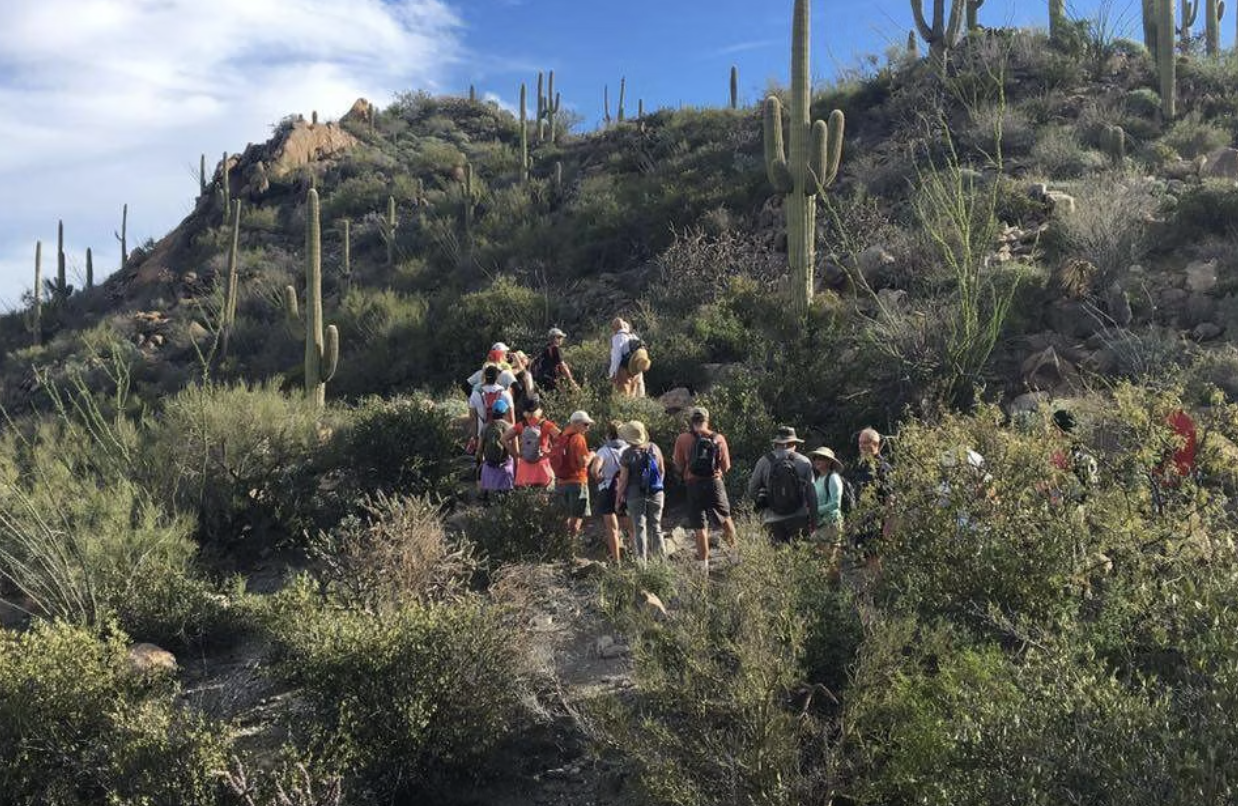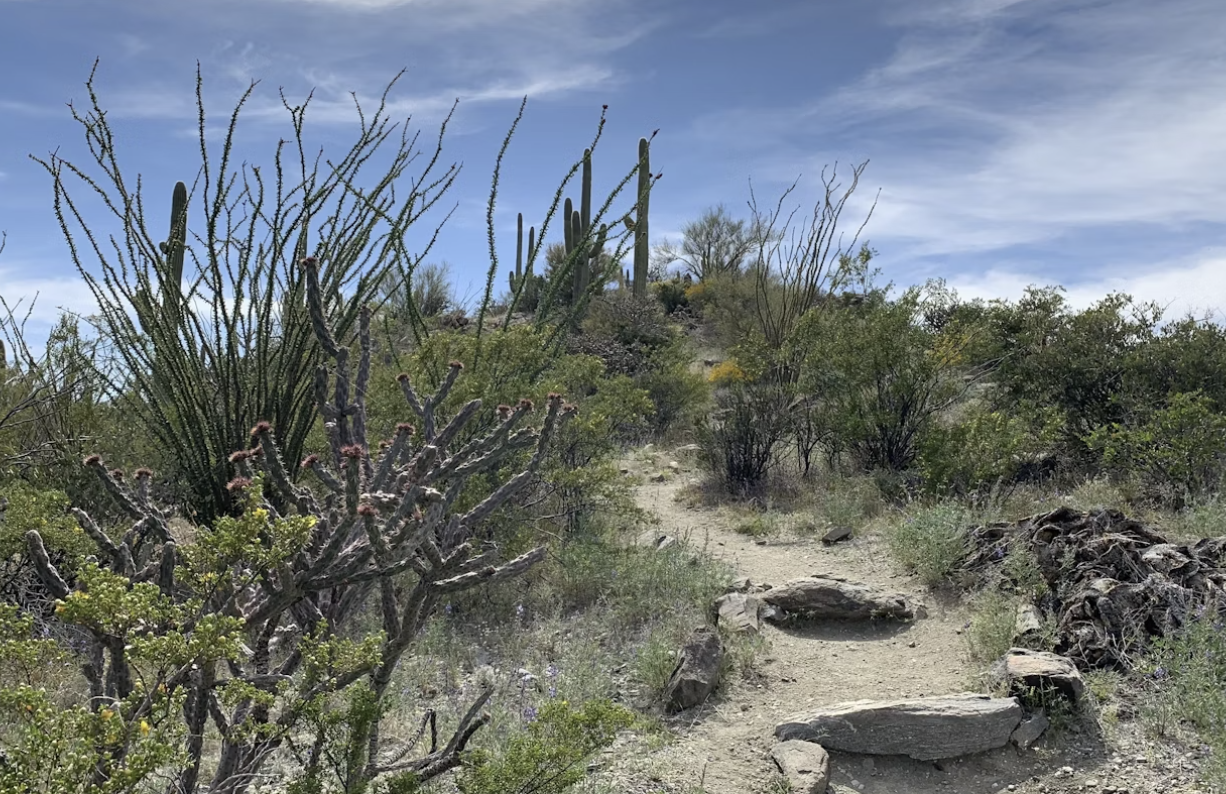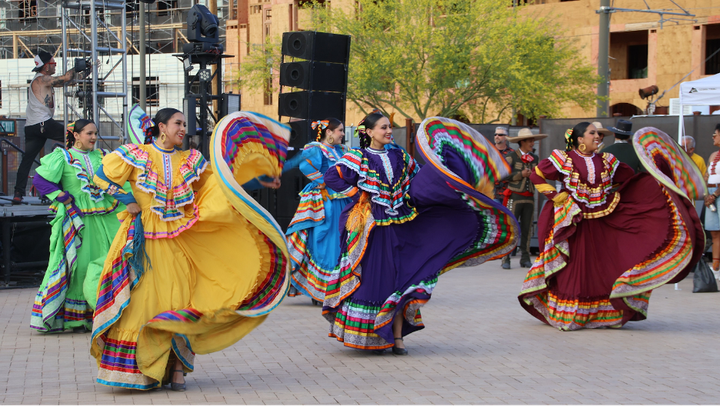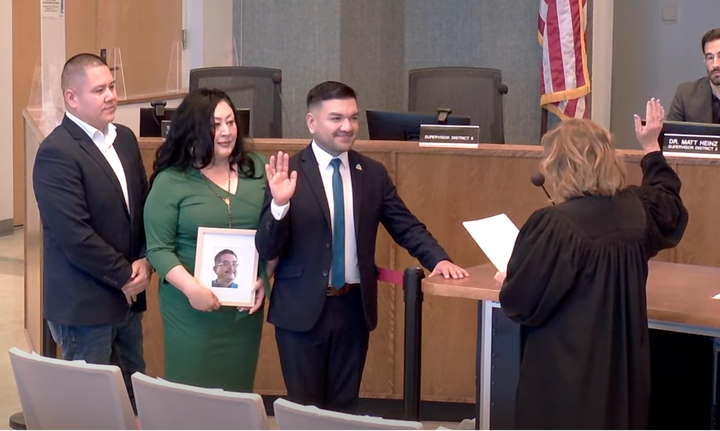Marana hosts guided hikes exploring traditional uses of native plants
Marana is hosting guided ethnobotany hikes in the Tortolita Mountains, where participants can learn about the traditional uses of native plants for food, medicine, and tools.

The town of Marana is hosting guided hikes of the Tortolita Mountains, offering attendees the chance to learn about traditional uses of native flora for food, medicine, shelter and tools.
Last week’s Sonoran Desert Ethnobotany Hike was led by the town’s natural resources supervisor, Jason Grodman, who engaged participants in a hands-on exploration of the relationships between people and plants.
The final hike of the season is scheduled for Thursday, May 1, and registration opened last week. The hikes are capped at 15 attendees, so those who want to secure a spot should act fast.
Hikers will learn from Grodman or a Pima County Conservation Lands and Resources naturalist about the cultural significance of plants utilized by Indigenous groups, including the Hohokam and Tohono O’odham.
“Participants can expect to learn about edible, medicinal and toxic or poisonous plants,” Grodman said. “They will hear about how Native Americans and early settlers used plants for survival and the cultural significance of certain plants in ceremonies and rituals.”
The Tortolitas are known for their diverse plant life and rich history, with the area providing an excellent setting for exploring ethnobotany, according to Grodman.
“The region was home to the Hohokam people and later the Tohono O’odham, who developed extensive knowledge of local plants for food, medicine, fiber and tools,” Grodman said.
Many of these traditional plant uses, such as harvesting saguaro cactus fruit and mesquite pods, remain relevant today and have inspired modern conservation efforts.

During the hikes, Grodman helps attendees identify native plants and explains their historical uses.
“Saguaro cactus red fruit was harvested by the Tohono O’odham to make jam, syrup and ceremonial wine,” he said. “Prickly pear fruit is high in vitamin C, and mesquite pods were ground into flour for baking.”
Other notable plants include creosote bush, used medicinally as a tea for colds, and desert willow bark, brewed to relieve fever and pain. But one of the most intriguing plants hikers are likely to see is the devil’s claw, Grodman said.
“When the pod matures and dries out, it splits open into two long, curved, claw-like structures that resemble a set of hooked talons,” he said. “They not only look cool but also play a key role in seed dispersal by catching onto passing animals.”
The plant’s seeds are edible, and its pods have traditionally been used for basket weaving.
The hike will span three to four miles and takes place on relatively flat terrain, with some minor elevation changes. Walking poles are recommended, and confidence on varied terrain is necessary. There will be plenty of breaks in shaded areas.
Grodman said hikers should prepare for the desert environment and stressed the importance of hydration, recommending that they bring a snack and plenty of water.
While next month’s ethnobotany hike is the last one of the season and could change based on the weather, additional hikes are planned for the fall.
The town will also continue to offer other outdoor recreation programs, including walking tours of Los Morteros, El Rio Preserve and the new “Roots and Vines” tour at Marana Heritage River Park.
For more information on upcoming events, visit maranaaz.gov.
Lauryn Abozeid is a journalism major at the University of Arizona and Tucson Spotlight intern. Contact her at labozeid@arizona.edu.
Tucson Spotlight is a community-based newsroom that provides paid opportunities for students and rising journalists in Southern Arizona. Please support our work with a paid subscription.




